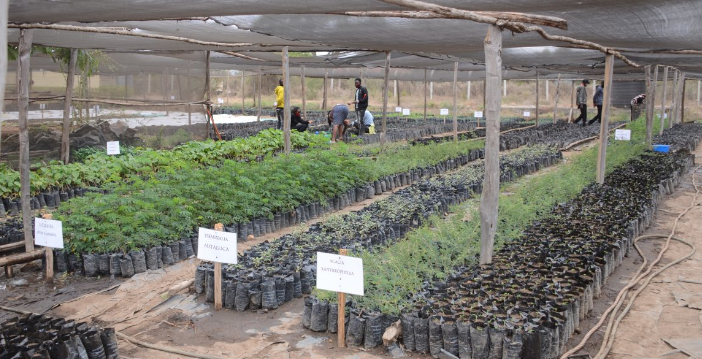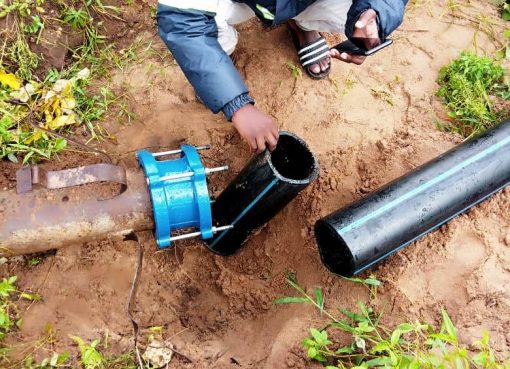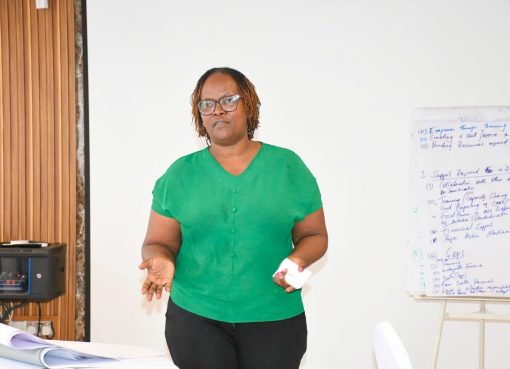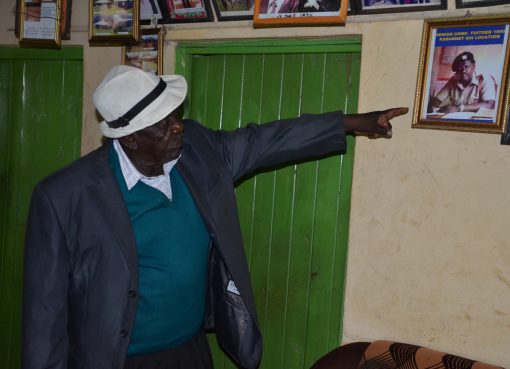The Ministry of the Environment and Forestry in collaboration with stakeholders in Environmental management sector have launched a Tree planting campaign to promote reforestation programmes.
The initiative targets Schools in an effort to increase forest cover in the country to at least 10% in line with the global figures to reduce the impact of climate change that was caused by excess carbon emission in the atmosphere.
The move that followed Presidential Directive includes the reactivation of chiefs’ nurseries, through technical support by the Kenyan Forestry Service and the allotment of 10 percent Corporate Social Responsibility (CSR) in a tree-growing industry to achieve a constitutional 10 percent national tree cover by 2022.
Over the years, Kenya has boosted the tussle against deforestation with the establishment of partnerships with state and non-state actors to improve the forestry cover through plantation of trees both in public and private institutions.
The Kenyan laws and policies have direct relevance in supporting this strategy of increasing the tree cover to 10%. The Constitution of Kenya requires the Country to increase and maintain tree cover at a minimum 10% of the total land area. Article 69 (1) (b) emphasizes the need to “work to achieve and maintain a tree cover of at least 10 % of land”.
The Kenya Vision 2030 similarly places the environmental sector in the social pillar and emphasizes the need to conserve natural resources to support economic growth. For forests, the goal is to increase the area under forest to 10% by 2030 and sustainably manage natural forest resources for environmental protection and enhanced economic growth.
In Kenya 90% of our school’s cook with wood consuming over 1 million metric tons per year with a value of over 10 billion shillings. Transitioning schools to cleaner and more sustainable sources of fuel will not only reduce costs of running our schools but also provide better health and environmental outcomes.
“The Clean Cooking project is in line with our determination to ensure that schools in the Republic of Kenya, transition from overreliance on wood fuel and charcoal to more sustainable sources of energy for cooking and lighting” Education CS Prof George Magoha spoke during the launch of clean cooking project that was held at Alliance High school on 5th March 2021.
The Government of Kenya intends to reduce CO2 emissions by 30% by 2030 and one of the mitigation strategies that will help the GOK achieve that target is promotion and adoption of clean energy technologies to reduce overreliance on wood fuels in our institutions.
The Cabinet Secretary further revealed that the quantities of greenhouse gases in the atmosphere have risen to high levels not seen in 3 million years. As population and human activities increase, so do the cumulative levels of greenhouse gas emissions.
Mr. Magoha noted that trees are the best known sequesters of carbon from the atmosphere and thus when we cut trees for wood fuel or charcoal, we significantly contribute to the rising global temperatures.Burning solid biomass like wood is one of the leading contributors of accumulation of greenhouse gases into the atmosphere but more tragically, increases the rate of deforestation.
“I am therefore very grateful to Alliance High School, Equity Bank and its technical partners for making it possible to have this school transition from a heavy consumer of wood fuel to modern and cleaner cooking technology that preserves the environment” said Magoha.
The CS lauded Alliance High which has traditionally used wood for cooking that has seen the school harvest trees from its compound. With the installation of clean cooking infrastructure, the school can now reap the benefits of clean cooking which include significant cost saving, faster cooking, eliminate air pollution, better health outcomes, avoid cutting of trees for fuel, cleaner environment and a motivated workforce.
He further urged all schools in Kenya to follow this example and embrace clean energy and contribute in reversing environmental degradation and save costs. Schools can save up to 50% of their cooking budgets by converting to clean energy especially when utilizing the existing cooking infrastructure.
President Uhuru Kenyatta has reiterated severally that forest cover rates in Kenya were still “low.” Speaking at the launch of the reforestation project on 22 May 2020, he called for aggressive planting of trees. This could enable the Eastern African country to achieve a forest cover rate of 10% by 2022 with the extra 1.8 billion trees, if all concerned institutions prioritized the activity in their budgets.
Kenya is also responding to the appeal from the UN to plant 1.8 billion trees by 2022. The organization called on global leaders to act urgently in the latest edition of the ‘State of the World’s Forestry,’ published on 22 May 2020, in order to safeguard forest diversity, marked by alarming deforestation and decay.
The report uses animal origins from the Covid-19 health crisis to emphasize the importance of conservation and sustainable use of nature, emphasizing that forests conceive most of the earth’s terrestrial biodiversity. In the fight against climate change, reforestation remains the best weapon.
On his part, the Permanent Secretary in the Ministry for Environment and Forestry Dr.Chris Kiptoo noted “Schools, colleges, Universities hold a lot of land that can be put under tree cover. They also provide excellent facilities for establishment of tree nurseries and for community outreach programs. Pupils and students as we are all aware provide an excellent vehicle for culture change in the way we utilize and manage our natural resources.”
Dr Kiptoo noted that the Ministry of Environment and Forestry had already engaged the Ministry of Education with a view to establishing strong partnerships and collaboration in seedlings production and sensitization programs. The Ministry will provide the seeds and technical services while the Ministry of Education will provide land, water, security and labor for seedlings production and tree growing campaigns within schools and their neighborhoods.
“Tree growing campaigns will also require to be combined with other initiatives to increase the forest cover. Schools are particularly heavy wood consumers and require investment in other energy alternatives like biogas and solar for lighting and cooking. In addition, the market is rife with high efficiency cooking stoves that we are now encouraging schools to use in their cooking programs. These will address obvious wastages that we have witnessed and support a culture of environmental conservation in the school community” he said.
By Lydia Shiloya and Velma Mukhwana





